Introduction
In today's rapidly evolving technological landscape, selecting the right cloud service provider is paramount for organizations striving to optimize costs while maintaining robust and scalable infrastructure. This article delves into a comprehensive comparison between Amazon Web Services (AWS) and Microsoft Azure, focusing on key aspects such as pricing models, reservation plans, storage and compute options, and support plans. By examining the nuances of each platform, businesses can make informed decisions tailored to their specific needs, ensuring effective cloud strategy implementation and financial efficiency.
Whether considering AWS’s granular pricing structure or Azure’s bundled services, understanding these differences is essential for leveraging the full potential of cloud computing.
AWS Pricing Overview
AWS provides a highly adaptable cost model recognized for its pay-as-you-go structure, allowing users to pay solely for the services they utilize. This cost strategy includes various options such as on-demand instances, reserved instances, and spot instances, each tailored to different usage patterns and requirements. On-demand instances allow users to pay for compute capacity by the hour or second, with no long-term commitments, making it ideal for unpredictable workloads. Reserved instances offer a substantial reduction relative to on-demand rates in return for a one- or three-year commitment, designed for steady-state or predictable usage. Spot instances offer the most savings, allowing users to bid for unused EC2 capacity at a reduced rate, suitable for flexible and fault-tolerant applications.
To assist users in estimating expenses based on specific configurations and anticipated usage, AWS provides a comprehensive cost calculator. This tool is invaluable for budgeting and optimizing cloud expenses, ensuring that organizations can make informed decisions aligned with their financial goals. The cloud's inherent scalability and elasticity, coupled with advanced hardware, further enhance the cost-effectiveness of running modern applications on AWS.
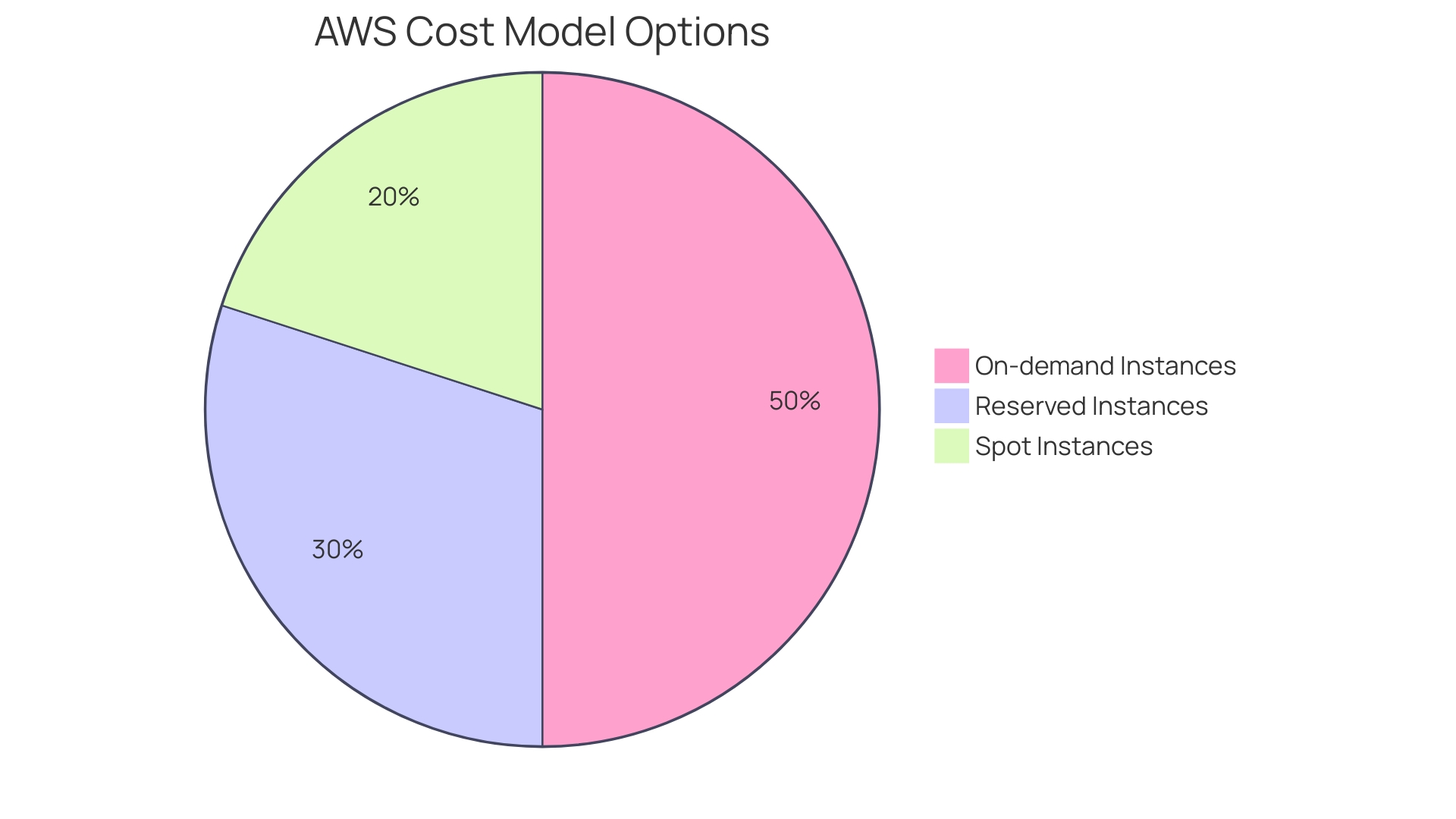
Azure Pricing Overview
The pay-as-you-go financial structure of the platform guarantees that users only incur charges for the resources they use, rendering it an economical choice for enterprises of any scale. The costs associated with the cloud service are divided into different categories, including virtual machines, storage, databases, and networking services, offering adaptability and clarity. Furthermore, Azure provides a cost estimation tool that enables users to calculate their expenses according to particular needs, assisting them in managing their budget efficiently. This tool employs advanced machine learning to customize price estimates to individual requirements, ensuring precision and ease of use. By applying filters, users can customize their cost options, making it easier to align with their unique business needs. While prices are estimates, actual expenses may differ based on factors such as the type of agreement with Microsoft, purchase date, and currency exchange rates.
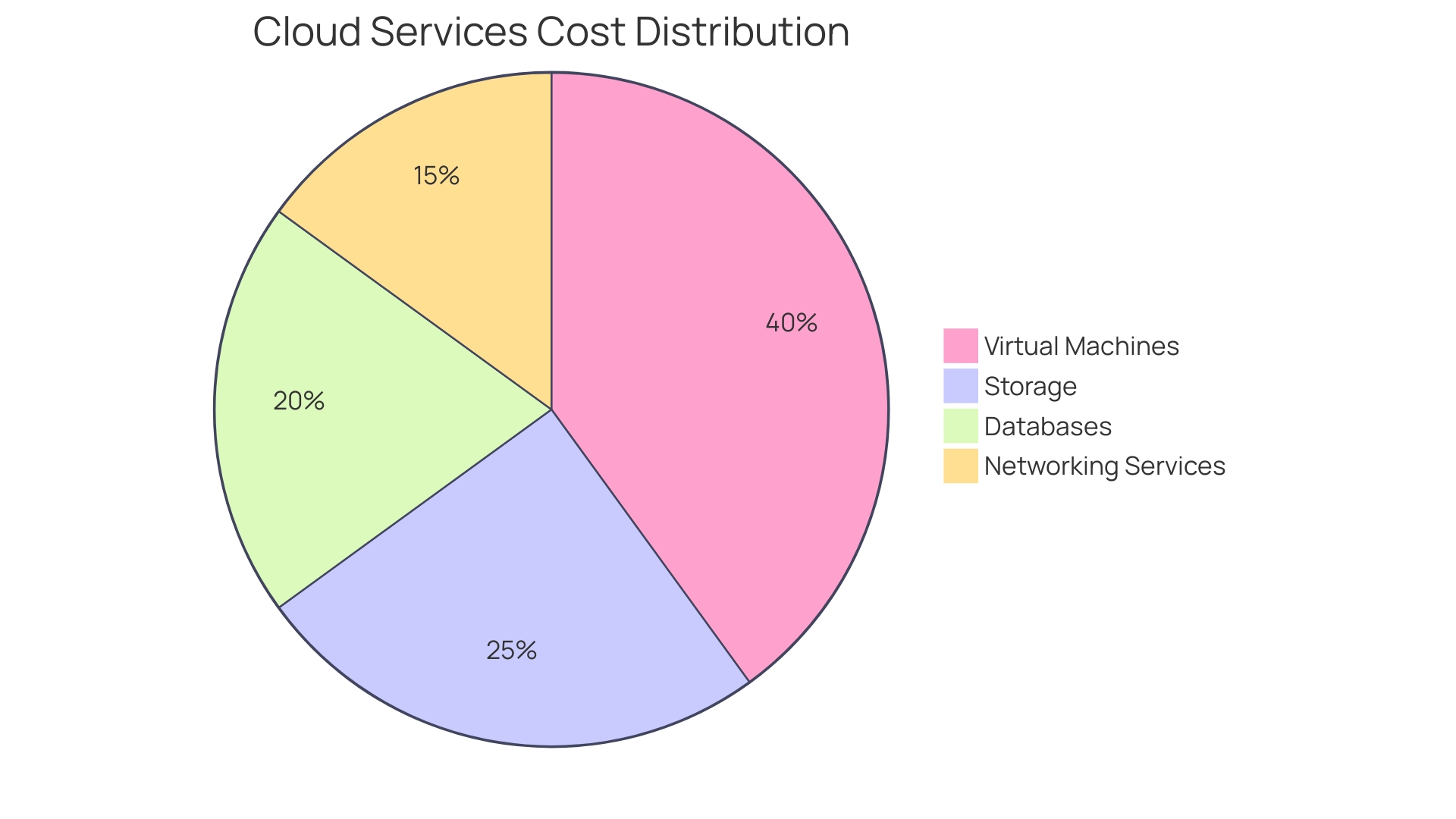
Pay-as-You-Go Pricing: AWS vs Azure
AWS and Azure both provide pay-as-you-go models, but their expense frameworks vary greatly. 'AWS employs a highly detailed financial model, categorizing expenses into various instance types and fee options. This granularity allows for precise cost management but requires a detailed understanding of the service offerings. On the other hand, the platform simplifies pricing through bundled services, which could be beneficial for specific workloads by providing a clearer overview of expenses.
The fundamental concept of price in both AWS and another cloud service is applied to a Stock Keeping Unit (SKU), the basic unit of what you purchase. It's important to distinguish price from cost, where cost is the function of consumption multiplied by price. Each SKU can have a list price or a contracted/custom price. The list price is the base rate, potentially subject to basic discounts, whereas the contracted price includes any negotiated discounts or credits specific to your organization.
Evaluating usage patterns is crucial for determining the most cost-effective option. AWS's detailed cost structure is advantageous for those needing fine-tuned control over their expenses, while Azure's bundled approach might offer simplicity and predictability for specific application types. Staying informed about changing cost structures and recognizing the differences between list and contracted rates is crucial for optimizing cloud spending.
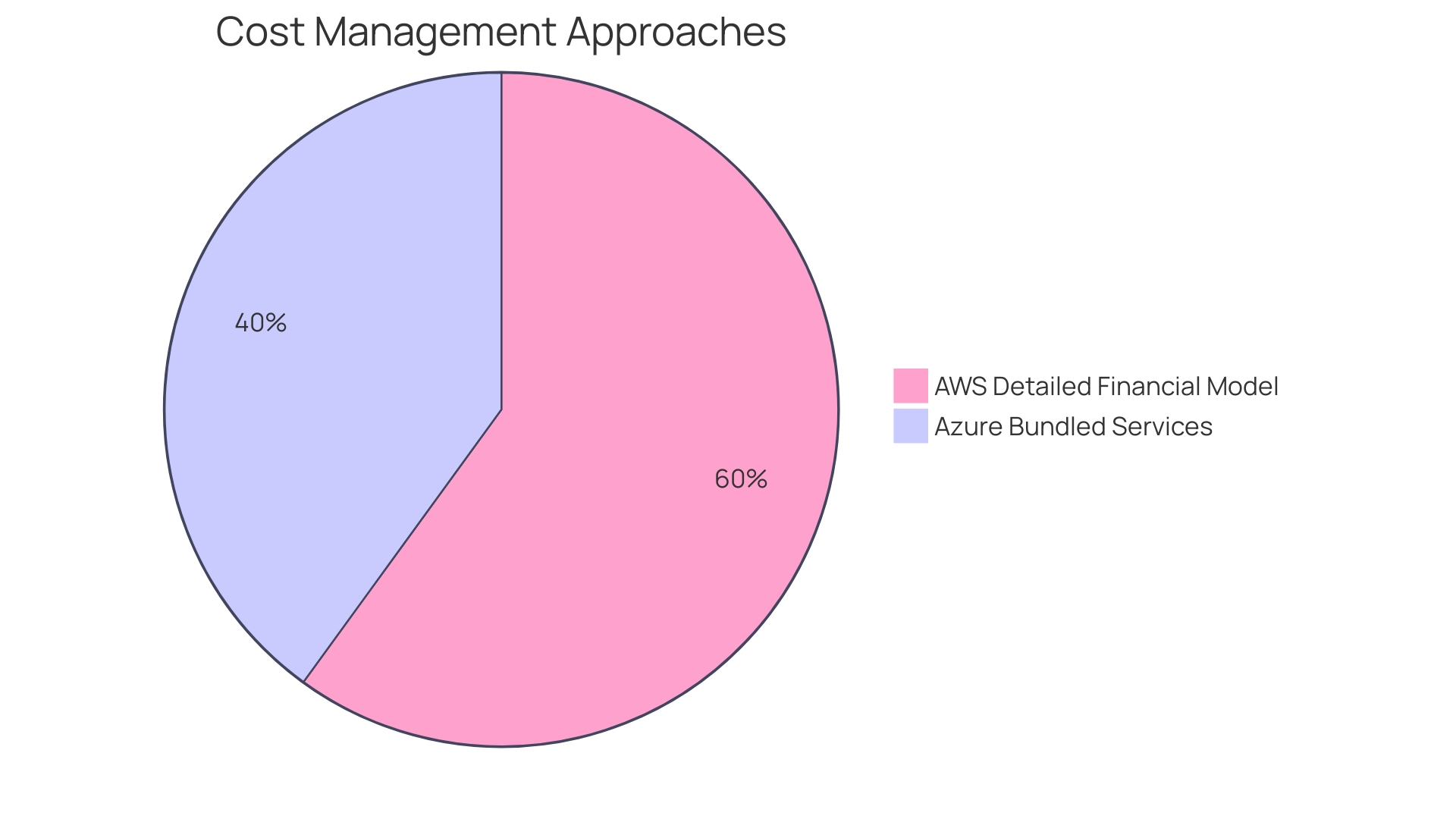
Reserved Instances and Savings Plans
AWS provides considerable cost-reduction choices through its Reserved Instances and Savings Plans, enabling users to agree to a one- or three-year period for notable discounts in contrast to on-demand rates. These plans cater to organizations looking to optimize their spending while leveraging AWS's extensive cloud capabilities. As noted, AWS's pay-as-you-go model requires careful monitoring to avoid unexpected expenses, but Reserved Instances and Savings Plans can mitigate this by offering predictable pricing structures.
Likewise, the platform offers Reserved Virtual Machine Instances, allowing users to secure capacity for one or three years. This method not only provides considerable savings but also corresponds with the requirements of businesses closely connected to Microsoft products. The platform's flexibility and strong security features make it a compelling choice for many organizations, especially those with specific compliance requirements or existing Microsoft infrastructure.
Choosing between AWS and another cloud service frequently depends on the particular requirements of your project, taking into account factors such as pricing, security, and integration. Each platform offers unique strengths that cater to different scenarios, and understanding these can guide your cloud strategy effectively.
Storage Pricing Comparison: AWS S3 vs Azure Blob
When evaluating AWS S3 and Azure Blob storage, both platforms offer tiered pricing models that cater to various usage and access needs. AWS S3 is famous for its various storage categories, including Standard, Infrequent Access, and Glacier, each intended to balance expense and performance depending on data retrieval frequency. This approach has made S3 one of the most popular cloud storage services, particularly noted for its ability to scale and optimize costs through strategic data management.
'Azure Blob Storage, in contrast, offers Hot, Cool, and Archive tiers, which are similar to AWS's offerings but include Azure's distinct cost structures and performance capabilities.'. These tiers allow organizations to efficiently manage their data lifecycle, ensuring that frequently accessed data is readily available in the Hot tier, while infrequently accessed data is stored more cost-effectively in the Cool and Archive tiers.
Comprehending the detailed cost structures of both services is essential. 'AWS S3 costs are influenced by factors such as storage used, data transfer, and retrieval requests.'. Thus, AWS offers comprehensive instructions to assist organizations in optimizing their storage expenses, highlighting the significance of prudent data management to prevent unforeseen charges. The tiered structure of the service also changes according to data access patterns, with particular expenses linked to each level.
Both AWS and the tiered pricing strategies of another major provider reflect the broader cloud market's trend towards flexibility and financial efficiency, enabling organizations to customize their storage solutions to their unique operational requirements and budget limitations.
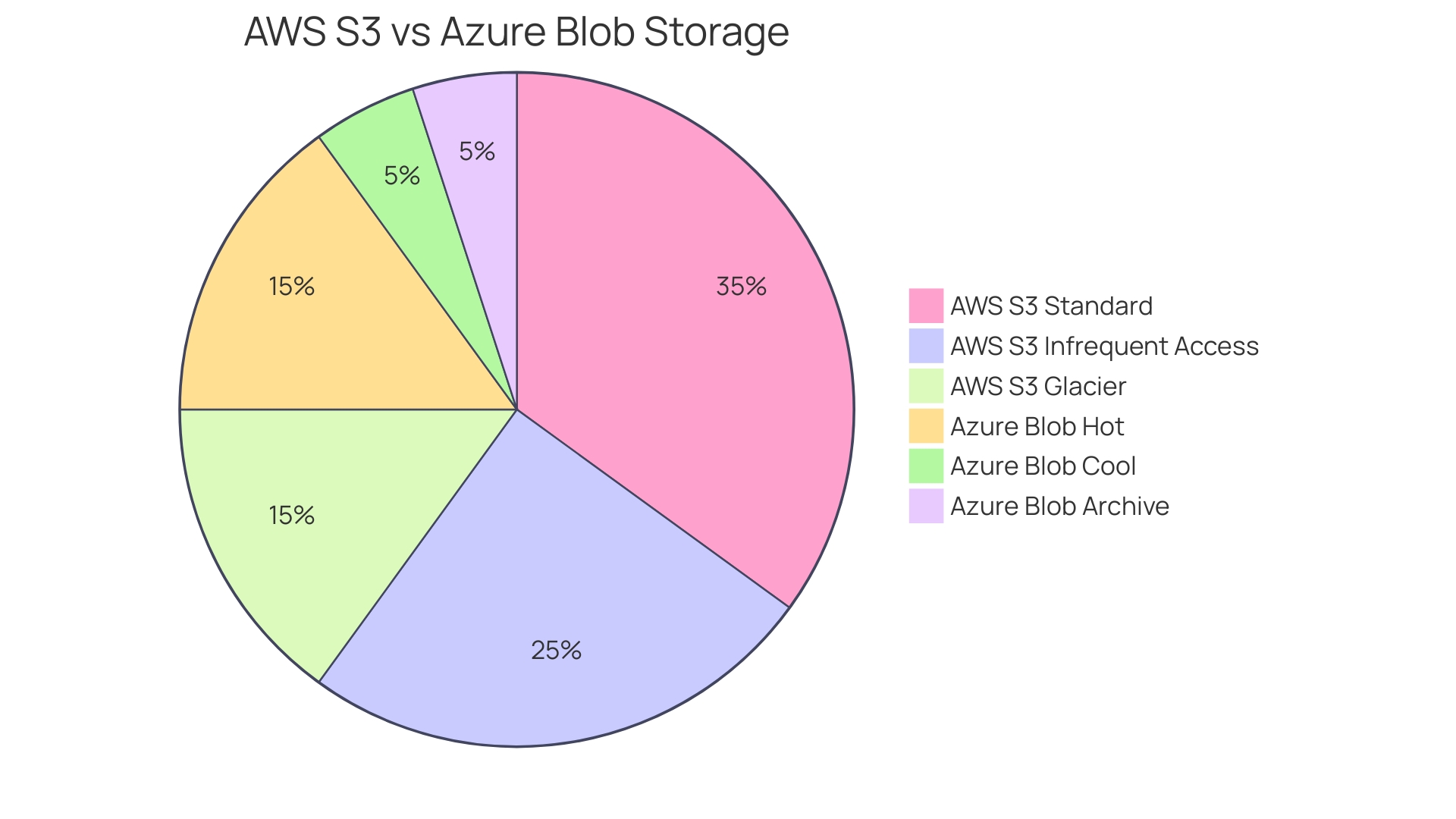
Compute Pricing Comparison: AWS EC2 vs Azure Virtual Machines
AWS EC2 and Virtual Machines both offer a varied selection of instance types designed for different workloads. AWS stands out with a broader selection of instance categories and configurations, catering to specific use cases including general-purpose, compute-optimized, and memory-optimized instances. This adaptability enables companies to adjust their infrastructure based on specific performance and financial needs. According to Gaurav Garg, a Senior Technical Account Manager at AWS, EC2 instances are pivotal in delivering scalable and cost-effective solutions that align with business needs, particularly in security and database management.
The cloud service, on the other hand, provides competitive cost structures for specific workloads, making it an appealing choice for organizations aiming to reduce expenses. The choice between AWS and another cloud provider often depends on the specific requirements of the business applications in question. As highlighted by Ratnesh Jamidar, AVP Engineering at Sprinklr, modern scalable workloads benefit significantly from cloud services, primarily due to their pay-as-you-go pricing models and the ability to utilize the latest hardware innovations.
Understanding the specific requirements of your applications is crucial. For instance, GoDaddy's initiative to optimize batch processing jobs underscores the importance of selecting the right cloud service to enhance efficiency and drive customer satisfaction. Whether choosing AWS's extensive instance variety or the economical options from its competitor, businesses must carefully assess their workload needs to determine which service offers the best value.
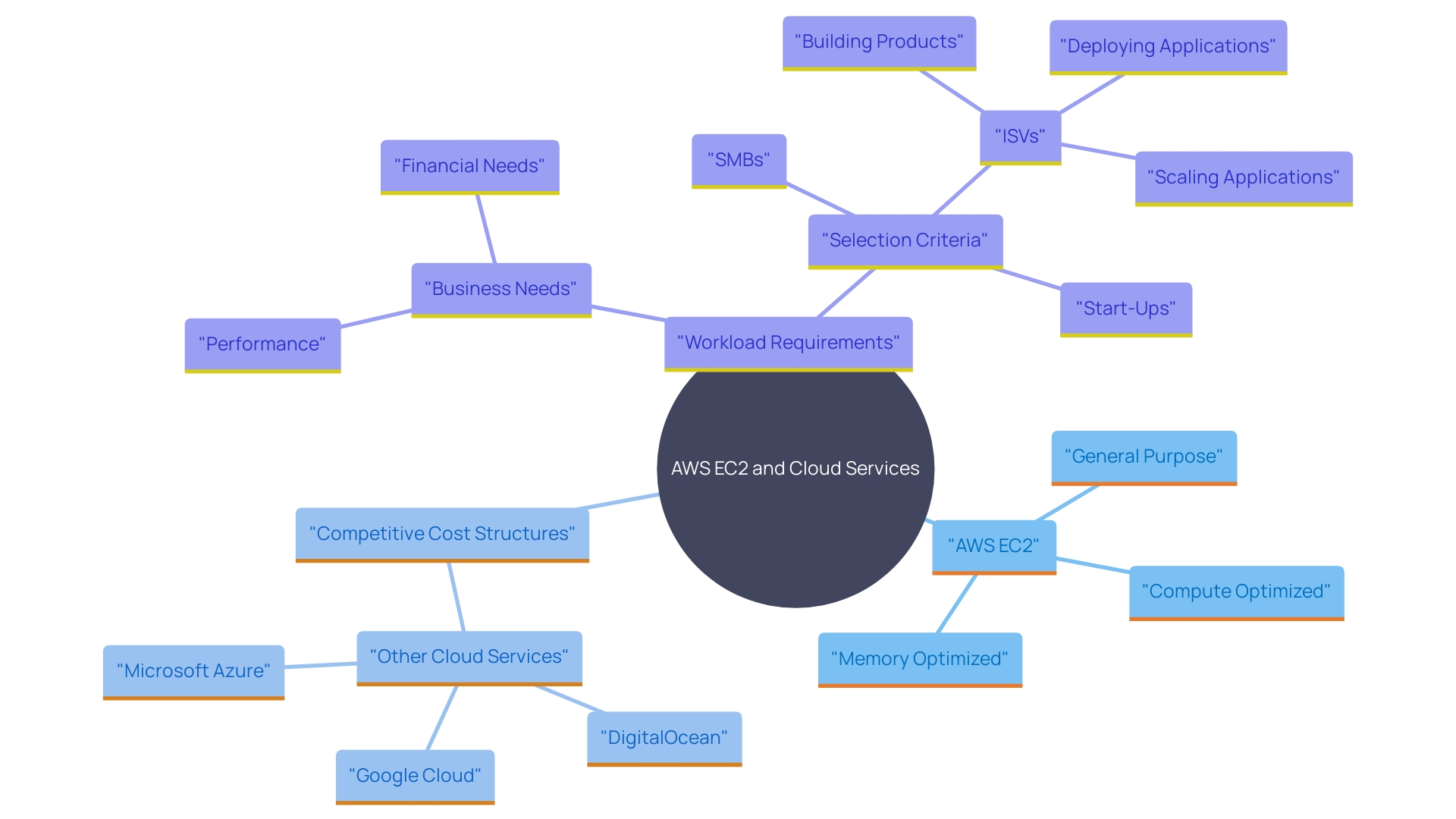
Support Plans and Pricing: AWS vs Azure
AWS and other cloud services offer tiered support plans to meet varying user requirements. AWS's support structure includes Basic, Developer, Business, and Enterprise tiers, offering a comprehensive range based on user needs. The platform, on the other hand, offers Basic, Developer, Standard, and Professional Direct plans, each designed to cater to different levels of support requirements. As organizations transition to cloud-managed services, it is essential to evaluate their current IT infrastructure and identify specific needs and goals. Users should carefully assess their support needs, considering factors such as cost, the complexity of their usage, and the level of technical assistance required, to select the most suitable support plan that aligns with their operational objectives and budget.
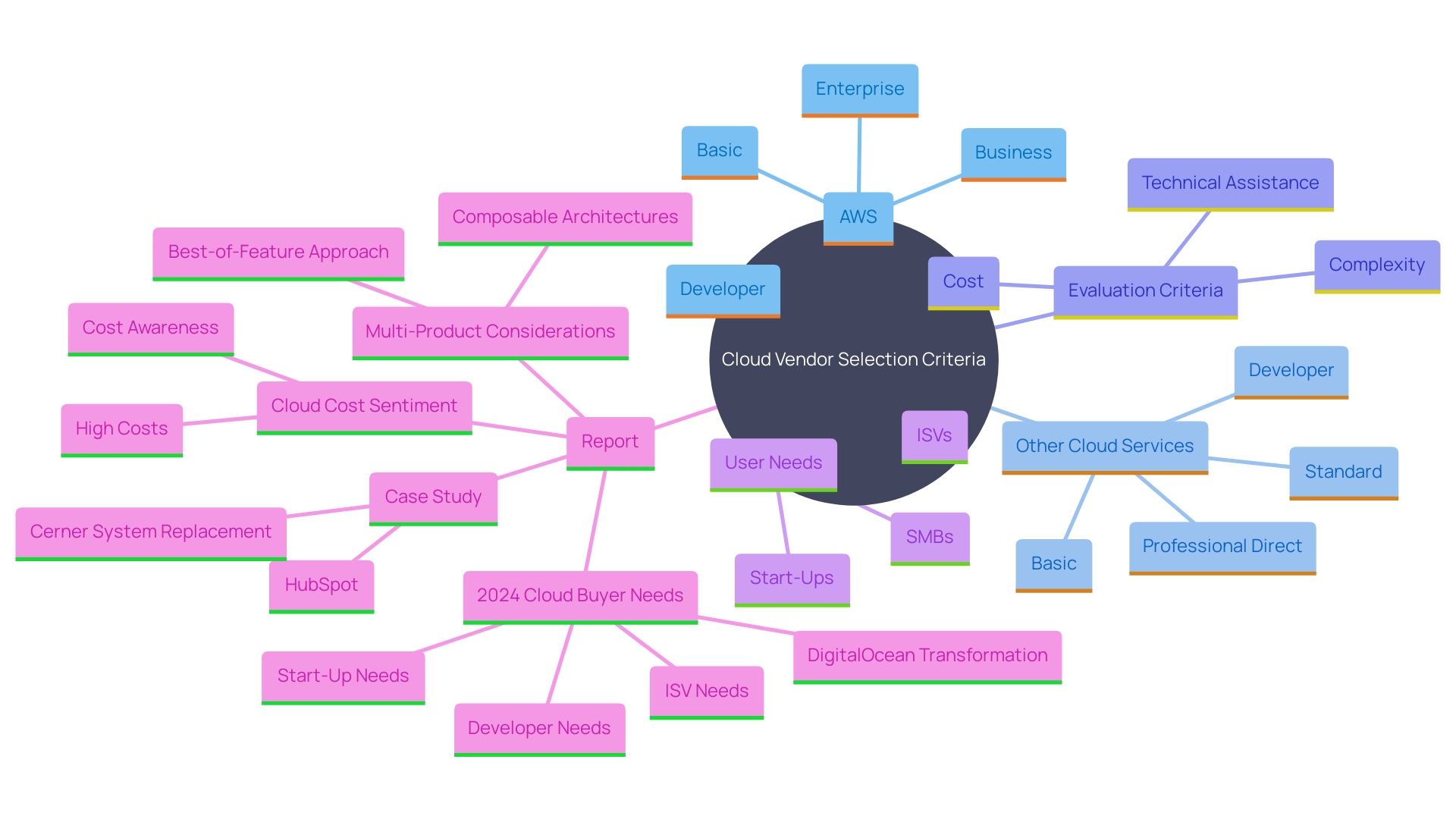
Choosing the Right Cloud Provider: Factors to Consider
When comparing AWS and another cloud service, it's crucial to consider several factors beyond just pricing. Service offerings, geographical availability, compliance requirements, and your organization's specific needs all play a significant role. "AWS and another leading platform both provide a wide array of services, from basic infrastructure to advanced machine learning tools, but the right choice depends on your existing infrastructure and long-term goals.".
For instance, organizations with mature development teams might benefit more from building in-house solutions, leveraging the flexibility and scalability offered by the cloud. On the other hand, those looking to minimize maintenance overhead may find managed services or SaaS applications more advantageous. According to Wangui McKelvey, unlocking insights from data across the organization empowers businesses to leverage AI effectively, which underscores the importance of choosing a cloud provider that aligns with your data strategy.
Geographical availability is another critical factor. Both AWS and Azure have extensive global networks, but ensuring compliance with local data residency laws can influence your decision. For example, financial institutions in the European Union face stringent regulations requiring data to remain within specific regions, a scenario where on-premise solutions might still be relevant.
Additionally, the transition to cloud services involves a learning curve. As noted by Marinus Krommenhoek, adopting modern IT landscapes with microservices and serverless architectures can add high value but requires careful planning and execution. Evaluating these aspects alongside pricing will provide a more comprehensive view when selecting the right cloud provider.
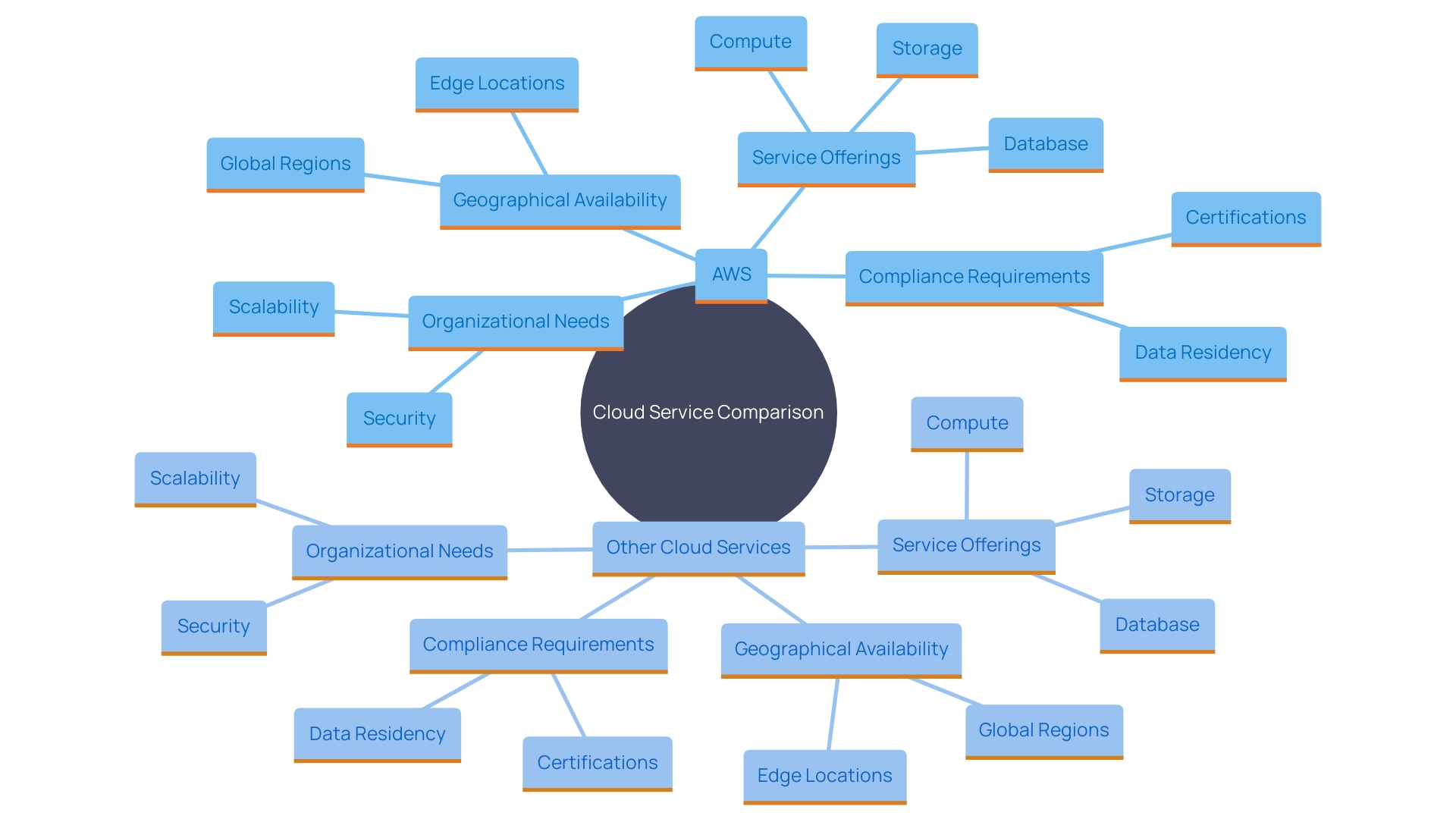
Conclusion
In the competitive landscape of cloud service providers, both Amazon Web Services (AWS) and Microsoft Azure present distinct advantages that cater to various organizational needs. AWS's flexible pricing model, characterized by its pay-as-you-go structure, offers granular options such as on-demand, reserved, and spot instances. This level of detail allows for precise cost management, particularly beneficial for businesses with unpredictable workloads.
Conversely, Azure's pricing framework emphasizes bundled services, providing a more straightforward overview of expenses, which can be advantageous for specific applications.
The comparison of reserved instances and savings plans reveals that both platforms offer substantial cost-saving opportunities. AWS’s commitment options can lead to significant discounts, while Azure's reserved instances align well with enterprises already integrated into the Microsoft ecosystem. Such features enhance the overall financial efficiency of cloud strategies for organizations.
Storage and compute pricing models further illustrate the differences between AWS and Azure. AWS S3 and Azure Blob Storage both offer tiered pricing to accommodate varying data access needs, while AWS EC2 and Azure Virtual Machines present diverse instance types tailored to specific workloads. Understanding these nuanced pricing structures is crucial for organizations aiming to optimize their infrastructure and manage costs effectively.
Ultimately, selecting the right cloud provider requires a comprehensive evaluation of multiple factors beyond just pricing. Organizations must consider service offerings, geographical availability, compliance requirements, and their unique operational needs. By thoroughly assessing these elements, businesses can make informed decisions that align with their long-term goals and enhance their cloud strategy.




